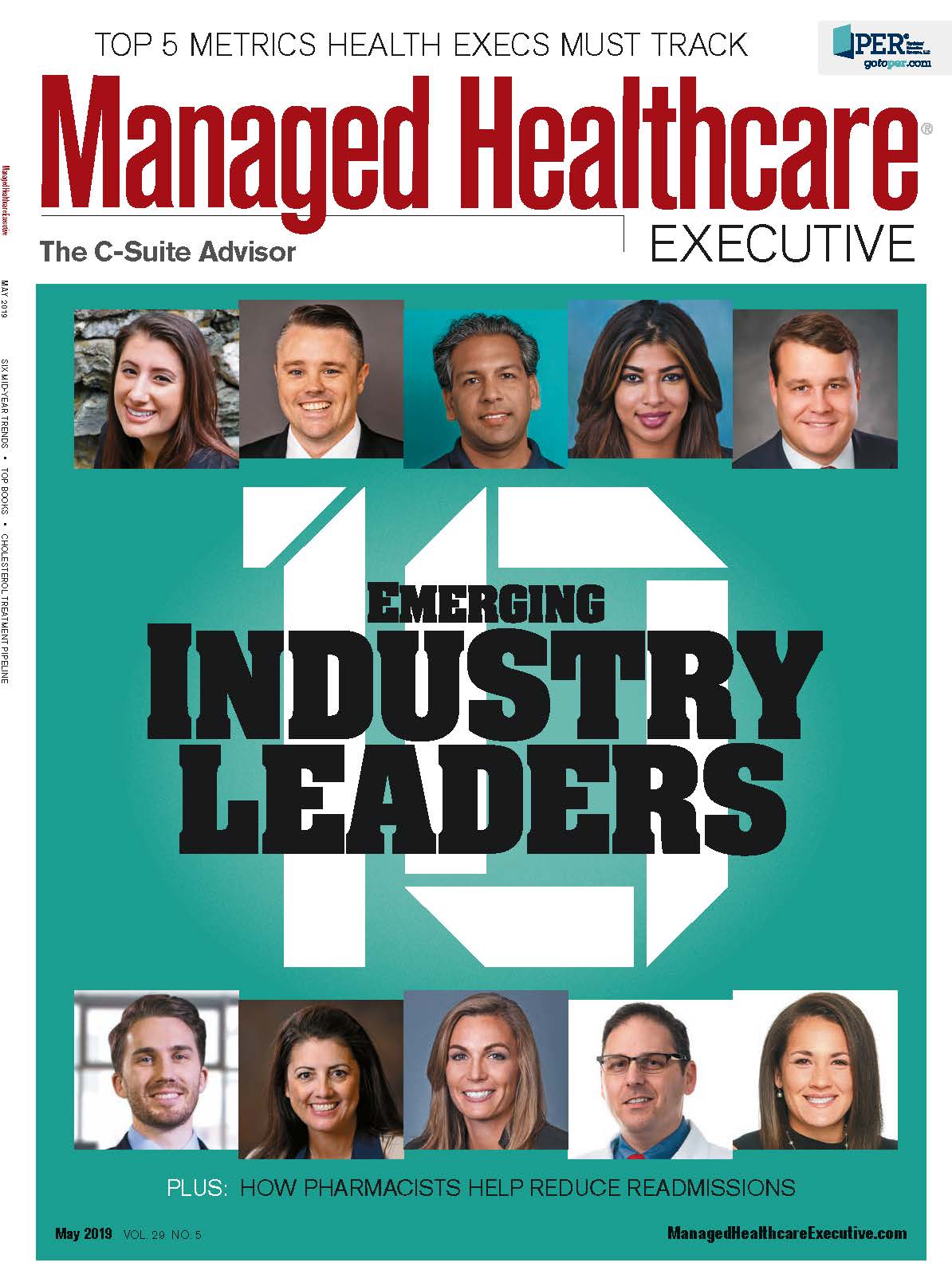Six Mid-Year Healthcare Trends to Watch
From disruptive technology to regulatory ‘known-unknowns’ to the plight of today’s healthcare consumer, 2019 is shaping up to be a year of extraordinary transformation.

Lindsay R. Resnick, MHA

As we hit the halfway mark of 2019, it's worthwhile to step back as take a look at what’s trending, what’s getting attention, and most importantly, what’s impacting your business in the healthcare landscape. There are big policy issues to resolve, practical product and operating decisions to be made, and increased pressure from customers making new, market-altering demands. The following healthcare trends provide context as you anticipate change and manage through obstacles and opportunities ahead.
1. The “Medicare for All” debate will rage on
Is healthcare a right, an individual responsibility, or both? Current proposals falling under the moniker of Medicare for All can be slotted into four categories:
- Single payer. Replace private health insurance markets with a government run system.
- Public option. Create a new public health insurance plan available to individuals.
- Medicare/Medicaid buy-in. Expand access to current federal and state insurance coverages.
- Public/private partnership. Structure a program for individuals similar to Medicare Advantage.
At the heart of all these approaches (and their viability) is cost-how will it be paid for? Cost has been the death knell for most healthcare proposals in the past, and with predictions that the current Medicare program is expected to go bankrupt in seven years, cost will remain the biggest obstacle going forward. Add to the mix that paying hospitals Medicare rates would bankrupt that sector and support from private insurers and pharmaceutical companies is non-existent, and the stars would have to line-up for Medicare for All to become reality. Progressives would have to win the presidency with a Medicare for All as a key agenda item and Democrats have to hold the House and take the Senate with a large majority to pass a bill. And even then, there are no guarantees.
Related article: Medicare for All: Four Things Health Executives Should Know
Action: No need to panic. Stake out a position that promotes and protects your interests and jump into the debate in preparation for the 2020 election-remember, 40% of 2018 midterm voters said healthcare was the top issue facing the U.S.
2. Uninsured Americans on an upward trajectory
The number of Americans without health insurance has increased by 7 million since 2016. Congressional Budget Office (CBO) projects that under current ACA rules (i.e., no further interference from the Trump Administration) 32 million Americans will be uninsured by 2020.
Should the President and Department of Justice’s unwavering efforts be successful in having ACA completely struck down, the total uninsured population in the U.S. would quickly top 50 million. Closing insurance marketplaces and exchanges, ending Medicaid expansion, and eliminating protections for Americans with pre-existing conditions would be significant contributors. Demolishing Obamacare also threatens ACO survival, HIV and opioid program funding, and Medicare Part D out-of-pocket costs.
What’s the endgame? On the eve of the final ACA enrollment deadline this past December, a U.S. District Court judge ruled the ACA unconstitutional. An appeal to the Fifth Circuit Court will resume the ACA challenge (beginning July 2019) and ultimately, it’s likely the next ruling will go to the U.S. Supreme Court for final resolution-stay tuned.
Action: Contingency planning would be smart as the individual and small group insurance markets would be severely impacted if ACA goes away, and uncompensated care and provider bad debt would skyrocket as all those insurance ID cards disappear.
3. Teamwork makes the dream work
Vertical integration, consolidation of companies that own different parts of value chain, is reshaping the business of healthcare. On top of the dominance of large multi-hospital systems and national mega-health insurers, we’re seeing retail behemoths aggressively stake their claim across verticals in the health care market-from big box store clinics to data analytics to aging-at-home to digital commerce. It’s a true ‘blurring of the lines’ in healthcare delivery. The lure of two organizations combining resources in a joint venture, alliance, or partnership is too good to pass up in a turbulent marketplace like healthcare.
The result is collaboration never before thought possible-some are competitors playing defense, others are seeking scalability, and still others simply want to take advantage of a perfect storm of an industry in transformation. Alas, these associations don’t come easy. Balancing financial, operational, and customer needs between multiple parties takes extraordinary discipline, common vision, and mutual trust.
Action: Given the integrators, disruptors and disintermediators reshaping traditional healthcare markets, can you really go at it alone? Cross-industry teamwork brings access to new markets, delivers cost-critical efficiencies, and enhances customer experiences.
4. Healthcare consumerism is a ‘crawl, walk, run’ journey
Whether GenY, millennial, or boomer, they don’t want to engage with the healthcare system the way it is currently structured. They are demanding virtual health, telemedicine, community clinics, wearables, and active aging. And, they want relationships with companies they can trust to make healthcare simple: be there when I need you, communicate with me honestly, deliver an experience that respects me as a person, and do the right thing for my health.
As more and more financial responsibility shifts to the consumer (i.e., the patient is the payer), you have their attention: give me the most for my money for what’s most meaningful and important to me. But, healthcare purchases-from insurance to prescription drugs to routine check-ups-aren’t easy, given health literacy disparities, variations in sites-of-care, and in general, bureaucracy extraordinaire. Getting to the point of being a savvy healthcare shopper able to make confident, value-based choices takes time and experience. In healthcare, the path to self-reliance is long and full of impediments.
Related article: Seven Tactics to Create a Lifetime Healthcare Consumer
Action: Help your customers! As consumers are forced to take more personal responsibility for healthcare decisions they need help making personalized, value-based choices. Why? Because ultimately, engaged healthcare consumers drive better care, better experiences, better outcomes, and better value.
5. Healthcare technology is an unseen power tool
Healthcare’s future isn’t about wearables, virtual care, and artificial intelligence-it’s about experiences, services, and convenience, all powered by subtle, behind-the-scenes technologies that the customer barely sees. Healthcare innovators are using technology to deliver value to their customers that improves experiences and health outcomes. They are leveraging technology to enhance the healthcare value chain by containing costs, introducing infrastructure efficiencies, increasing individual productivity, promoting self-management, and extending life expectancy.
Take the wearable sector, where one in six consumers own and use one. They started out as a wellness tool, a fitness tracker. Now they have shifted to real-time monitoring of a wide range of patient vital signs with promises of becoming an auto-integrated part of the electronic health record, all unseen by the patient. Tomorrow’s health and medical technology solutions will be invisible in our everyday life, removing barriers, creating convenience and inspiring healthcare action. It’s the new normal.
Action: The less intrusive the better. Connected healthcare consumers are ready to embrace innovation and willing to be engaged through digital health touchpoints. There’s unprecedented opportunity for health brands to emerge as trusted, go-to resources that are there to help consumers take responsibility for their health.
6. A year from now you may wish you started today
As competitors realign, market rules change, and customer demographics shift, successful healthcare companies don’t sit still, they take a critical look at business plans, operating models, customer experiences, and growth strategies. To do this, context is critical: what’s getting attention in the marketplace that may (or may not) have influence on your future. Here’s a few additional health trends to add to your watch list:
- Primary health. Physician shortage or not, primary care is at the center of modern care delivery through large organized networks, medical home care models, proliferation of retail clinics, value-based payment, and in-home care delivery.
- Social health. An individual’s economic situation and social determinants (nutrition and food, education and literacy, work and home, guns, and addictions) have twice the impact on their health than biology, DNA, and clinical care.
- Weed health. Cannabis, both medical and legal recreational, is estimated to emerge as a $166 billion industry segment and will become a part of America’s healthcare fabric (medical claims, treatment protocol, workplace rules).
- Inspired health. Changing peoples’ behavior to deal with and improve their health-breaking health inertia-means motivating them to action through personalized emotional drivers and gut-level appeals such as fear, joy, self-esteem, and hope.
- Mental health. Crisscrossing generations-depression, anxiety, addiction, psychoses, dementia-means identifying and paying attention to warning signs and removing the stigma for getting timely, professional support will help turn mental illness to mental wellness.
Action: Empowered healthcare consumers are using their newfound influence to choose, challenge, and change the conversation with preferred brands. Healthcare is a complex domain with many issues pushing and pulling its multiple stakeholders-make sure you’re prepared.
Lindsay Resnick is executive vice president of Wunderman Thompson Health. He can be reached at lindsay.resnick@wunderman.com and followed on Twitter @ResnickLR.

Extending the Capabilities of the EHR Through Automation
August 2nd 2023Welcome back to another episode of "Tuning In to the C-Suite," where Briana Contreras, an editor of Managed Healthcare Executive, had the pleasure of chatting with Cindy Gaines, chief clinical transformation officer at Lumeon.
Listen